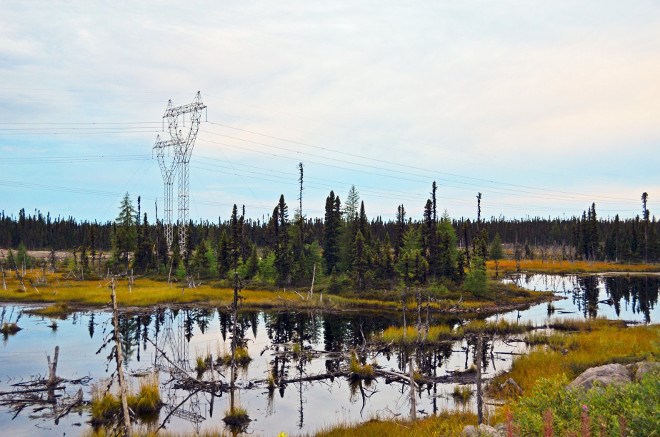Wataynikaneyap Power (Watay), a massive First Nations-led power project to connect remote communities to the provincial grid for the first time, received a major funding jolt.
The provincial government provided a $1.34-billion loan to be used toward construction costs of the $1.9-billion project. Valard LP officially got the green light to proceed with construction.
The Watay project is majority owned by 24 northwestern Ontario First Nations in partnership with its utility project partner Fortis and other private investors.
Watay invited its project partners and various dignitaries to celebrate the “milestone” moment in Thunder Bay, Oct.29.
Want to read more stories about business in the North? Subscribe to our newsletter.
The project involves stringing 1,800 kilometres of power lines to connect 17 remote First Nations communities and 14,000 people.
The transmission line network will remove the communities’ reliance on using expensive diesel fuel for local power generation.
About 770 construction jobs will be created with the project generating close to $900 million in socioeconomic spinoffs.
Construction for the first leg of the power corridor actually began last year with Pikangikum First Nation, north of Red Lake, being the first community hooked up last December.
The anticipated completion date for the entire project is 2023.
Valard, the project’s engineering, procurement, and construction contractor, was awarded the contract on Sept.6.
The power line contractor is also working with NextBridge on twinning the East-West Tie transmission project between Wawa and Thunder Bay.
In a statement, Wataynikaneyap Power CEO Margaret Kenequanash said this is a project 28 years in the making.
“Today we place our mark on history as we work toward a shared vision which will form the foundation for our future generations. We celebrate the moment of truth today but tomorrow our commitment to the tasks before us becomes very real as the work begins in our effort to connect our First Nation communities on time.”
“We are proud to work with our First Nations partners to bring cleaner and more reliable energy to their communities,” said Fortis president Barry Perry.
“The project will avoid an estimated 6.6 million tonnes of CO2 equivalent GHG emissions over 40 years, contributing to a focus on cleaner energy.”
Nishnawbe Aski Nation (NAN) Grand Chief Alvin Fiddler applauded the Indigenous utility company on advancing the project.
“Connecting our remote First Nations to the provincial energy grid will finally end their reliance on expensive and environmentally harmful diesel generation. This will improve the health of our members, and help bring jobs and other economic benefits to our communities."




